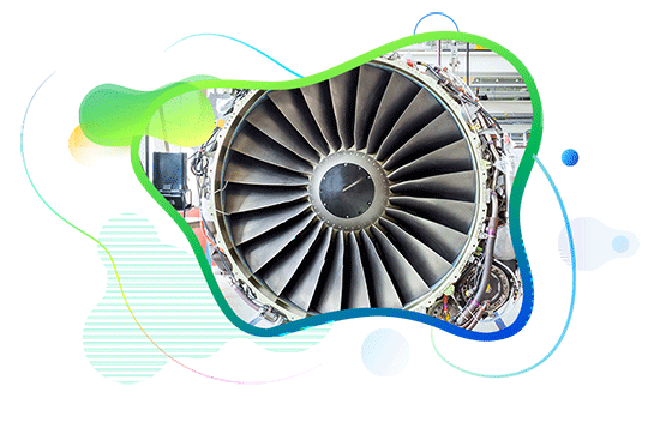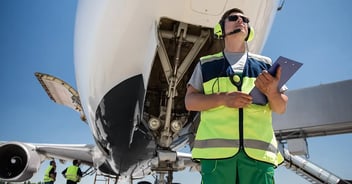
Change, is a remarkable constant; and our ever evolving world is a marvelous testimony to it. We have come a long way; from cave paintings to optical systems; from horsebacks to jet planes. But then, there are those few things that are yet to change…
Problem solving for instance!
Elementary school or a multi-billion dollar business, the fundamental approach to solve any daunting problem is essentially the same: break it into manageable pieces. But breaking something apart is easy; the real challenge is putting it back together! Something, the bigger organizations of today, know too well…
In spite of investing an overwhelming capital, in some of the top notch IT systems in the world, industrial giants still encounter numerous disruptions in information flow, in day to day operations! Though these systems are pioneers in their respective functional silos, when it comes to an organization in totality, what we are left with is layers and layers of isolated systems forcefully patched up together with whatever integrations the respective architectures allow…
But what seeps through these cracks isn’t just data; it’s competitive edge, the very profitability of an organization. And this loss is profoundly extrapolated when it comes to industries as complex as aviation; that have numerous critical facets to address to; ranging from uncompromised safety, rapid technological adaptations, faster TAT and cut-throat competition to top it all.
This essentially means that in Aviation, even a minor glitch in communication between a typical finance and SCM/Materials system might lead to an avoidable AOG situation; and hence irrecoverable loss. Or an erroneous transfer of life parameters of a critical component from materials system to maintenance system, might lead to a catastrophic disaster.
Of course, manual interventions are in place when it comes to critical aspects of operations; component parameters are constantly rechecked at various stages; and there is almost always a temporary system bypass to avoid AOG situations under any circumstance. But these manual workarounds are mere mitigation of the core problem. What this rapidly growing industry needs is obliteration of all such information flow glitches; so that manual interventions aren’t needed in first place!
Moreover, the problems we discussed are the evident ones; under the sheets, there are many more that are often overlooked.
Maintenance cost (of systems) for instance!
Multiple systems, inevitably means multiple streams of expenditures pertaining to everything from license renewals, operating costs, support infrastructure, multiple trainings for users and so on.
And what about scalability?
Are all systems with different architectures, scalable to grow in-sync with the organization, in capacity and complexity; keeping their integration patchworks in place? Most probably not! What we are looking at is a constant unforeseen threat of data flow disruptions, due to upgrading of integrated systems with time; something, which is only getting more frequent, as IT systems perpetually evolve.
Moreover, the implications don’t even end here. There are many more…
Buyer power for instance; multiple minor entities deal with multiple system vendors which means that the bargaining power of the organization goes for a toss. And this is not just limited to the initial procurement; rather it extends throughout the life cycle of each of these systems, for almost every aspect ranging from license renewals to upgrades.Hence, with every passing day, it becomes more evident that merging isolated solutions doesn’t really solve the core problem of Enterprise Information management.
What this ever growing aviation industry needs is: one seamless system that addresses all the needs of an organization; in totality; the one that can keep pace with exponential business growth and technological evolutions; the dire demands of the day. The key is not to break the problem. Rather, to solve it as a whole.
But such an approach brings us back to the age old dilemma; that one system can’t do the job of another; a screw driver can’t be a knife! This indeed was the opinion a century back; when the world armies were gearing up for some of the biggest and complex operational challenges humanity has ever undertaken; the tragic world wars.
Rapid, disruptive technological innovations, cost cutting, streamlining the processes and adoption of effective strategies; the concerns of great armies then, are in many ways similar to those of the industrial giants today.
It was soon realized that rapid mobilization of troops to cover strategic battle points was one of the most crucial aspects to win a war. And for the troops to pace, the burden on individual units was to be reduced. But how was that possible when every soldier needed so many tools in the battle field to survive; ranging from a screw driver and wrench to service his gun; a can opener and spoon to eat; to a knife to cut through entanglements, and at times, throats.
The list of these essential tools was long; and none of them could be replaced; which essentially meant, that every single soldier was laden with an extra burden of several kilograms in the battle field, where agility and pace were everything; to survive, and to kill! While most armies carried on with this burden and suffered, one of them evolved; it solved the problem differently; as a whole.
And thus, the legendary Swiss army knife was born. It eliminated the need of several kilos of bulky tools, by fusing them into one that weighed just a few grams. The benefits of which are obvious, especially in times of cut-throat (literally) competition; something, that is the hallmark of aviation industry today. Swiss army knife is a remarkable example that multiple isolated problems cannot only be solved as a whole, but can be solved, without compromising on quality.
Enterprise systems that will thrive tomorrow will be the ones that evolve towards this much needed change; today. Those that focus on optimizing the performance of the organization as a whole; and not just the functional silos. We at Ramco systems, with our comprehensive aviation suite, have already taken formidable leaps in this direction.
With utmost care we have developed an assortment of features that include almost everything an aviation business needs today; big and small. We go all the way from handling the core complexities such as aircraft maintenance, SCM, financials and assets; to peripheral needs ranging from Electronic Flight book, advance reliability analysis and documentation management via our E-pubs module.
Furthermore, with remarkable flexibility in almost every system aspect, ranging from alerts, workflows to extension developments, Ramco Aviation solution can be easily configured and extended to fully meet individual customer needs. And we don’t stop here! We take the game to next level with our mobility devices. Gone are the days when businesses were helplessly tethered to computers and laptops alone. These are the times of powerful smartphones, smartwatches, tablets and Google glass; and we are offering several business operations on them, as an option.
Finally, like a tradesman’s toolbox, our workspaces provide precise business intelligence at all levels, optimizing the organizational performance as a whole. All this, with the commendable agility and quality of a Swiss knife; which we truly are to the aviation industry; an ever evolving, comprehensive and most importantly, a seamless enterprise system; that nurtures an organization from root to tip; and not just the functional silos in isolation.
Because what seeps through the cracks, isn’t just data!
Frequently Asked Questions (FAQs)
Enterprise asset management (EAM) involves the management of mission critical assets of an organization throughout each asset's lifecycle. EAM is used to plan, optimize, execute, and track the needed maintenance activities with the associated priorities, skills, materials, tools, and information. The aim is to optimize the quality and utilization of assets throughout their lifecycle, increase productive uptime and reduce operational costs.
Enterprise asset management (EAM) involves the management of the maintenance of physical assets of an organization throughout each asset's lifecycle. EAM is used to plan, optimize, execute, and track the needed maintenance activities with the associated priorities, skills, materials, tools, and information.
The software helps in effective maintenance of assets through preventive, predictive, shutdown and breakdown maintenance strategies. The system also helps enterprises mitigate equipment risks by enhanced safety standards. The streamlined operations and improved asset performance helps organizations increase their investment effectiveness.
EAM is important because it helps organizations track, assess, manage and optimize asset quality and reliability. Asset intensive Organizations have hundreds, thousands, even millions of assets which needs to be maintained to maximize / optimize life of these assets to increase the return on investment.
The key features of effective EAM are:
- Work management.
- Maintenance Strategies (Preventive/ Predictive / Breakdown / Shutdown).
- Planning and scheduling.
- Supply chain management.
- Health and safety.
- Mobility.
- Analytics.
- Improved Asset Health at reduced cost through data driven maintenance Programs
- Complete visibilityon entire maintenance data across Equipment, across Models, across Branches to aid in analysis & decision making such as to Repair or Replace the Equipment
- Insightful analysis of Inspection Data to improve customer satisfaction
- Effective maintenance management enhanced by predictive maintenance and inbuilt analytics
- Increased reliability and safety, keeps complete track of all the inspections & calibration schedules
- Mobile Application enables users to execute work while “in the field” leading to minimized non-productive time and increased productivity and reduces duplication of work and human errors in recording information.
- Quick turnaround time through Actionable Notification & Alerts for every process in real time and accessible anytime and anywhere.
- Improved Regulatory Part of asset management involves the implementation of better O&M practices, which can significantly improve compliance.
Asset Intensive companies under the following Industries :
- Ports
- Cement and Mining
- Utilities
- Fleet Maintenance
- Equipment Rental
- Other Manufacturing
- Real Estate & Infrastructure
- Power Generation
Contact us for a meeting and schedule a demo
This differs on case to case basis, based on the type of installation and unique industry specific requirements. Contact us for a meeting and schedule a demo.
This differs on case to case basis, based on the type of installation and unique industry specific requirements. Contact us for a meeting and schedule a demo.
Stay Connected, follow us on LinkedIn / Twitter to know more about EAM Software latest trends.


